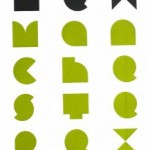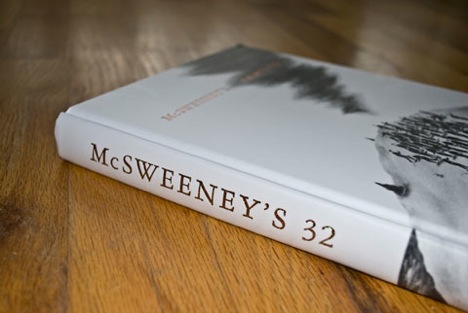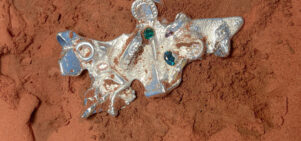In praise of the new print.
Susie Stubbs
Don’t believe the hype. Print isn’t dead, just as digital media isn’t the saviour of British publishing. Instead, Susie Stubbs finds a third way.

Print is dead! Long live the digital! All praise the blog, the online magazine, the comments boards and apps, the Boo and the video, the micro-blog and its 140 character witticisms. No, seriously, praise it all, because the digital world we inhabit has changed everything. The British publishing industry is being crushed to death by the weight of its digital successors. Even with online versions of the Daily Mail and Guardian allegedly pulling in millions of readers, the publishing houses that produce them are failing to compete. British newspapers, according to a recent report, account for less than 1% of UK internet news traffic.
But if that is the case, why does print still persist? In the past few weeks I’ve received three new magazines, one of which, Corridor8, is no flimsy, throwaway tome. With over 250 pages, this art publication weighs more than my Netbook. It is an anachronism not only because of its hefty size: it is also only available in hard copy and, most perplexing of all in a world governed by fast-moving digital media, is produced just once a year. An annual that covers art, writing, design and architecture, it is like a living, breathing piece of history, a book that harks back to a period when we took our time to produce media commentary.
 Corridor8 isn’t alone. In the US, independent publishing has long been championed by McSweeney’s, the imprint set up over a decade ago by Dave Eggers and which produces The Believer magazine and McSweeney’s Quarterly Concern, both of which wrap up wonderful writing inside laboriously-designed covers (the Quarterly changes format every issue – one featured two hardback, cloth-bound books sewn together and designed to be read both front-to-back and back-to-front). Closer to home, the bi-annual Popshot marries new poetry with bespoke illustration, while Magma, the graphic designer’s newsagent, continues to stock hard-to-get titles that in any other bookstore would never make it to the shelves.
Corridor8 isn’t alone. In the US, independent publishing has long been championed by McSweeney’s, the imprint set up over a decade ago by Dave Eggers and which produces The Believer magazine and McSweeney’s Quarterly Concern, both of which wrap up wonderful writing inside laboriously-designed covers (the Quarterly changes format every issue – one featured two hardback, cloth-bound books sewn together and designed to be read both front-to-back and back-to-front). Closer to home, the bi-annual Popshot marries new poetry with bespoke illustration, while Magma, the graphic designer’s newsagent, continues to stock hard-to-get titles that in any other bookstore would never make it to the shelves.
In Manchester, meanwhile, there remain those who celebrate the relevance of print. Things Happen and Bewilderbliss (the latter co-edited by our own Matthew Hull) tackle design and fiction respectively. These two magazines are produced by the young and idealistic, following where countless others have been before and, perhaps inevitably, faltered. Yet they continue a tradition of independent publishing that just plain refuses to lie down and die.
The art world has also witnessed a shift back to old media. Bracketpress is currently running an exhibition of book design and letterpress printing, while the fifth Manchester Artists’ Book Fair was held earlier this month at MMU. The Islington Mill collective One69a tirelessly produces and promotes the nearly-lost art of screen printing (you can, and should, buy some of their wares in pop-up shop Grotto), while fine artists such as David Osbaldeston, whose work was shown at Castlefield Gallery in the summer, combine old and new media in their quest to create something meaningful from the maelstrom of 21st century media.
 So where does this leave us? It leaves us in a place where, just as it would be silly to argue that print is dead, it would be similarly so to herald digital media as the saviour of British publishing. The future of publishing lies somewhere in between the two.
So where does this leave us? It leaves us in a place where, just as it would be silly to argue that print is dead, it would be similarly so to herald digital media as the saviour of British publishing. The future of publishing lies somewhere in between the two.
The best print publications are those that work across platforms. So, whilst I’ll buy occasional copies of The Believer, I also subscribe to the McSweeney’s iPhone app. I’ll immerse myself in Twitter during dull afternoons in the office, but I also buy a weekend paper purely to thumb my way through its numerous pages. And while an artist such as David Osbaldeston uses 35mm film to create new work, he does so to comment on 21st century concerns; in the case of his last show in Manchester, on the unreliability of the internet as a source of historic fact.
What unites the best print and online content is the care taken to produce both. Quick, throwaway digital media does not last, just as today’s free-sheet becomes tomorrow’s chip paper. It is telling that I love my iPhone as much as my now dog-eared, perfect bound copy of October’s The Believer.
Careful content, then, the kind created by specialists, creates a loyal following no matter what platform it is published on. That following may be small, true, but niche is where it’s at. Perhaps, then, our proclamation should not be ‘print is dead, long live digital media’. Perhaps it should be that digital media is good, but niche media is the future.
Corridor8 is available now (price). Printed & Published, an exhibition of Bracketpress work, Sir Kenneth Green Library, MMU, until 4 December (free). Images (top to bottom): David Osbaldeston: Out of Time (The Light of Day/The Action of the Play), courtesy the artist and Matts Gallery; Twitter bag available for £7 from Bracketpress; One69a poster available from Grotto; McSweeney’s, courtesy Everyday.



















